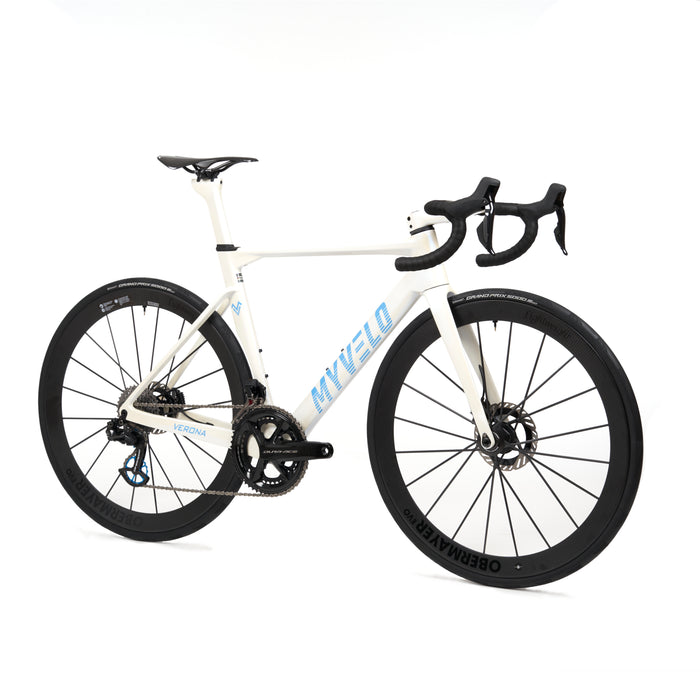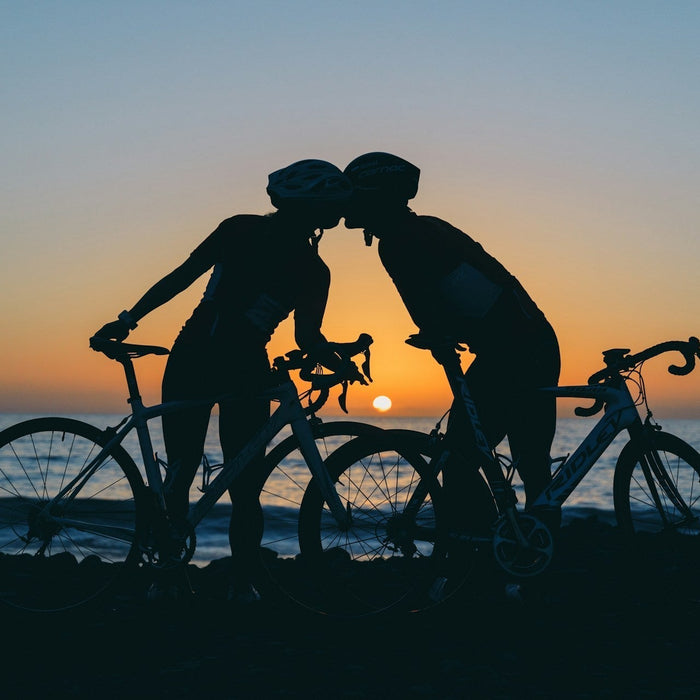
Verona Road Bike - Ltd. 33
incl. FREE shipping & free returns

Von Vincent Augustin |
4 minutes read time

But what exactly is behind EPOC? And how can you maximize this effect through your road bike training?
EPOC describes the increased oxygen consumption after an intense exercise. After a strenuous workout, your body needs more oxygen to recover and restore homeostasis (its natural balance). This leads to increased calorie consumption that lasts for hours after exercise. The more intense your workout, the greater the EPOC effect.
When racing a bike, it is particularly interesting how you can increase the EPOC effect through targeted training methods such as interval training or high-intensity exercise.
When you complete an intensive session on the bike, various processes take place in your body:
Compensate for oxygen deficit: During training, more energy is needed than the body can provide at that moment. This deficit must be compensated for after training .
Replenishing energy reserves: Your body needs to replenish its glycogen stores and regenerate the energy sources used up during training.
Lower your body temperature: During exercise, your body temperature increases. Cooling down also requires energy.
Lactate breakdown: Lactate (lactic acid) is produced during intensive training. Your body has to break down this lactate, which also costs energy.
All of these processes lead to calorie consumption remaining elevated even after training. Studies show that the EPOC effect can last up to 24 hours after particularly intense sessions .
Now you're probably wondering how you can structure your road bike training to make the most of the EPOC effect. Here are a few strategies:
Interval training is one of the most effective methods to maximize the EPOC effect. It involves alternating between intense exercise and recovery phases. The high intensities increase the oxygen requirement during and after training enormously.
An example of an interval unit on the road bike could look like this:
This type of training challenges your body, intensifying the afterburn effect.
HIIT goes one step further than classic interval training. Here you use extremely short but maximum loads. The aim is to bring the body into a state in which it needs a high amount of oxygen during and after training in order to recover.
A HIIT session could look like this:
HIIT not only increases the EPOC effect, but also improves VO2max (maximum oxygen uptake), which is particularly valuable for road cyclists.
In addition to intervals, riding in the speed range (threshold range) is also a good method to increase the afterburn effect. Here you ride for a longer period of time just below your anaerobic threshold. This means you are riding in a range where you are not yet completely over-acidified, but the strain is still high.
An example of a speed training session:
This type of training puts strain on the body over a longer period of time, which increases oxygen consumption during and after exercise.
Nutrition also plays an important role in making the most of the EPOC effect. After intensive training sessions, it is crucial to consume the right nutrients to support regeneration and further boost your metabolism.
Protein: Protein helps repair and rebuild muscles damaged by exercise. A protein shake or a protein-rich meal immediately after exercise can help with this.
Carbohydrates: After intense interval or HIIT sessions, you should also make sure you consume enough carbohydrates to replenish your glycogen stores. This speeds up recovery and ensures that your body continues to burn calories efficiently.
Fluids and electrolytes: Intense training on the road bike also means that you sweat a lot. Drinking enough fluids and consuming electrolytes will help your body recover faster and maintain the metabolic process.
A well-structured road bike workout that maximizes the EPOC effect not only has short-term benefits. In the long term, this effect helps you improve your endurance, burn fat and increase your overall performance.
Especially when it comes to road cycling, the EPOC effect can help increase your VO2max, which is directly related to your maximum power output, meaning you'll be able to ride harder and longer without getting tired.
EPOC is a powerful tool to take your training to the next level. Through targeted training methods such as interval training, HIIT and speed training, you can maximize the afterburn effect and thus benefit from increased calorie consumption even after training. Make sure to adjust your nutrition and recovery accordingly to get the most out of your training.
Next time you're on your road bike, remember: It's not just about giving your all during training, but also about letting your body work efficiently afterwards - and this is where the EPOC effect comes into play!

Als Rennradfahrer möchte man möglichst ständig besser werden: schneller, ausdauernder und effizienter. Doch was, wenn der Schlüssel zu diesen Zielen nicht nur auf zwei Rädern liegt? Rudern, oft unterschätzt, bietet eine ideale Ergänzung zum Radtraining. Es trainiert nicht nur den ganzen Körper, sondern verbessert auch die Ausdauer, Kraft und Stabilität – entscheidende Faktoren für jeden Radsportler.

Nach einer intensiven Rennrad-Einheit ist die richtige Regeneration entscheidend, um Leistung zu verbessern, Verletzungen zu vermeiden und langfristig Fortschritte zu erzielen. Doch wie sieht eine effektive Erholung aus? Hier bekommst Du die besten Tipps zur optimalen Regeneration nach dem Rennradtraining.

Erfahre, wie Radsport-Ligen aufgebaut sind und weitere Infos zur Organisation im Profi-Radsport!